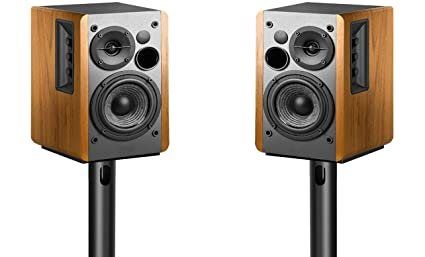Room nulls for stereo

I was performing frequency response measurement on my speakers, and there was a significant dip at around 110Hz range. Surprised, I repeated the measurement multiple times, with the same result.
My initial thought was that my speakers had uneven frequency response, but eventually figured out it was due to room reflection. It's surprising how severe the interference was.
I am going to summarize some of the typical room interferences below. My listening position is about 8 ft (~2.5 m) away, but the interferences I outline will still apply to many different situations.
Ceiling bounce
Each woofer is 8 ft away from me, and 5 ft away from the ceiling. With calculation, the ceiling bounce travels a total of 12.81 ft. The difference between 12.81 ft and 8 ft is 4.81 ft. 4.81 ft is half the wavelength of a 117Hz sound wave. So the ceiling null is around 117Hz.
If you sit a little further away or with taller ceilings, the room null would be slightly lower frequency, and vice versa. But you can expect it to be around this range.
This is the most significant interference for me.
Floor bounce
Typically the woofers would be slightly closer to the floor than to the ceiling, so the floor bounce would be slightly higher frequency.
Let's say each woofer is 8 ft away from me and 3 ft away from the floor. This would equate to 10 ft floor bounce travel. So the floor null is around 281Hz.
Again if you sit further away or you have taller speaker stands, your floor null would be of lower frequency, and vice versa. But it would be near that range.
Floor null is not an issue for me because it is obstructed.
Back wall bounce
This one is a little harder to calculate because we have to decide whether the cancelation comes from the woofer or the back of the speaker.
Let's assume the cancelation comes from the woofer itself. Assuming you place the speakers about 1 ft from the back wall, the woofers would be about 1.7 ft from the back wall. The back wall bounce would travel 3.4 extra ft, and the back wall null would be around 165Hz.
Back wall null is less significant for me than the ceiling null.
Side wall bounce
There is more variable to side wall bounce, because the distance between your speakers and the side walls can vary quite a bit. The two speakers may be different distance to the two side walls as well.
Summary
We don't have to rush out and buy room treatment, but it's nice to have a general idea of typical room interference frequencies
At 8 ft listening position:
- Ceiling null ~117Hz
- Floor null ~280Hz
Speakers placed 1 ft away from wall:
- Back wall null ~165Hz
Further distance means lower frequency
Sample Calculations
Assume each woofer is 8 ft from listening position, and 5 ft from the ceiling, the direct ceiling bounce would reflect a equidistance (4 ft from woofer and 4 ft from listener)
- distance from woofer to ceiling = sqrt(4x4 + 5x5) = 6.40
- distance from ceiling to listener = sqrt(4x4 + 5x5) = 6.40
- total distance of ceiling bounce = 12.80
- extra distance the ceiling bounce travels = 12.8 - 8 = 4.8
- Cancelation happens when 2 sound waves are exactly half wavelength apart
- 4.8 ft is half the distance of a 9.6 ft wave, which is 117Hz
- Ceiling bounces at different angles would travel slightly longer distance, thus at slightly lower frequency
- So the sum of ceiling nulls would actually skew slightly below 117Hz.